Blog

Mortgage Debt at Lowest Level Since 2006, Despite Increase in Originations
Despiterna sizeable increase in consumer debt overall household debt fell by $74 billionrnin the third quarter of 2012, driven largely by a decrease in mortgage and homernequity loan balances. The Federal Reserve Bank of New York’s QuarterlyrnReport on Household Debt and Credit reported that a drop of $120 billion inrnmortgage debt and $16 billion in home equity lines of credit were partiallyrnoffset by a 2.3 percent increase in non-real estate obligations.</p
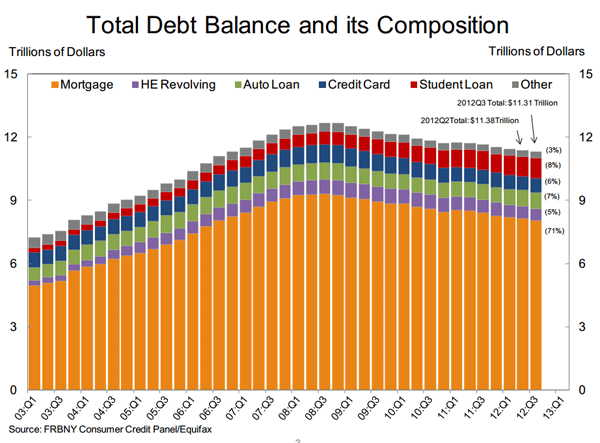 </p
</p
Therndrop in aggregate consumer debt continued a near-four year downward trend. At of the end of the quarter (September 30)rntotal consumer indebtedness was $11.31 trillion, 0.7 percent lower than in thernsecond quarter and $1.37 trillion less than the peak household debt hit in thernthird quarter of 2008.</p
Mortgagerndebt, the largest component of the aggregate, now stands at $8.03 trillion,rndown 1.5 percent from the previous quarter and the lowest level sincern2006. The decline has come in spite ofrnthe fourth consecutive increase in mortgage originations with $521 billion inrnnew mortgage debt appearing on consumer credit reports. </p
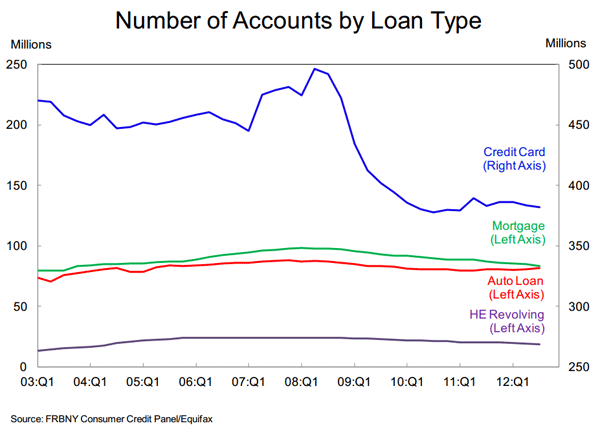 </p
</p
Thernother major components of debt increased. rnStudent loan debt increased by $42 billion to $956 billion. The Federal Reserve reports, however, that ofrnthe $42 billion only $23 billion is new debt while the remaining $19 billion isrnattributed to previously defaulted student loans that have been updated onrncredit reports this quarter, increasing the 90+ day delinquency rate forrnstudent loans to 11 percent.</p
Outstandingrnbalances on auto loans increased by $18 billion to $768 billion, the highestrnlevel in nearly four years and the sixth quarter this debt has increased. Originations increased by 4.4 percent torn$85.8 billion, the third consecutive quarterly increase. </p
Creditrncard balances were up $2 billion while aggregate credit card limits were downrn0.3 percent or $9 billion during the quarter. rnThere are 382 million open credit card accounts, down slightly from thernsecond quarter, while the number of credit inquiries decreased by one millionrnto 167 million over a rolling six month period.</p
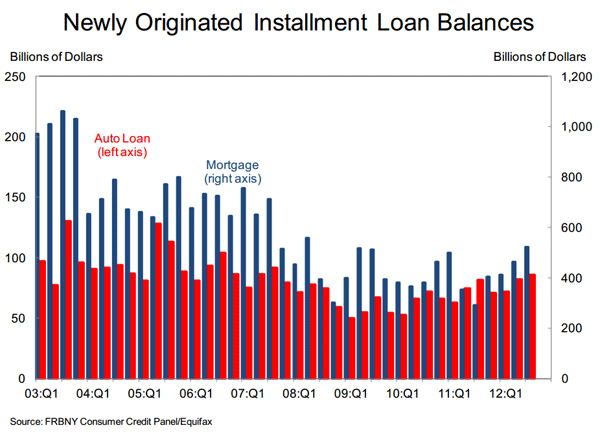 </p
</p
“Thernincrease in mortgage originations, auto loans and credit card balances suggestsrnthat consumers are slowly gaining confidence in their financial position,” saidrnDonghoon Lee, senior economist at the New York Fed. “As consumers feel morerncomfortable, they may start to make purchases that were previously delayed.” </p
Overall, delinquency rates improved slightly in the thirdrnquarter to 8.9 percent of outstanding debt compared to 9.0 percent in thernsecond quarter. This equates to aboutrn$1.01 trillion of delinquent debt, approximately $740 billion of which isrnseriously delinquent, i.e. 90+ days past due. </p
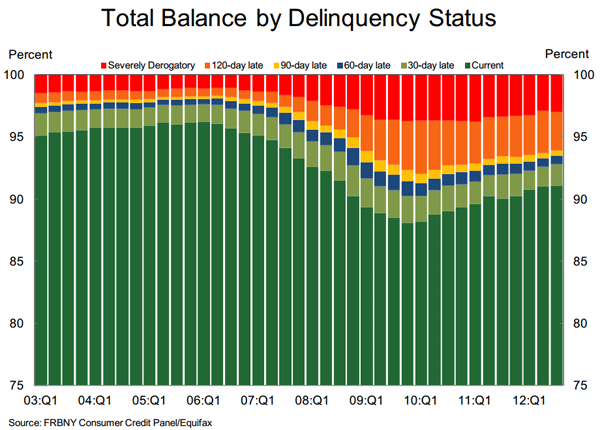 </p
</p
Thernpercentage of auto loan debt that is seriously delinquent was unchanged at 4.2rnpercent while student loan debt, as noted above, rose to 11 percent. Delinquency rates for mortgages decreasedrnfrom 6.3 percent to 5.9 percent and new foreclosures are returning to theirrnpre-crisis levels with new foreclosure notices added to 242,000 consumer creditrnreports. This was the lowest number in nearly six years. Home equity lines of credit delinquenciesrnremain high by historical standards at 4.9 percent.</p
Delinquency transition rates for current mortgage accounts were roughly unchanged, with 1.9% of current mortgage balances transitioning into delinquency. However, the rate of transition from early (30-60 days) into serious (90 days or more) delinquency increased to 26.3%, up by 2.8 percentage points from thernsecond quarter. Furthermore, the cure rate – the share of balances that transitioned from 30-60 days delinquent to current – saw a second consecutive decline to 26.4%.</p
About 354,000 consumers had a bankruptcy notation added to their credit reports in 2012Q3, a 16.3% drop from the same quarter last year, and the seventh consecutive drop in bankruptcies on a year-over-year basis.</p
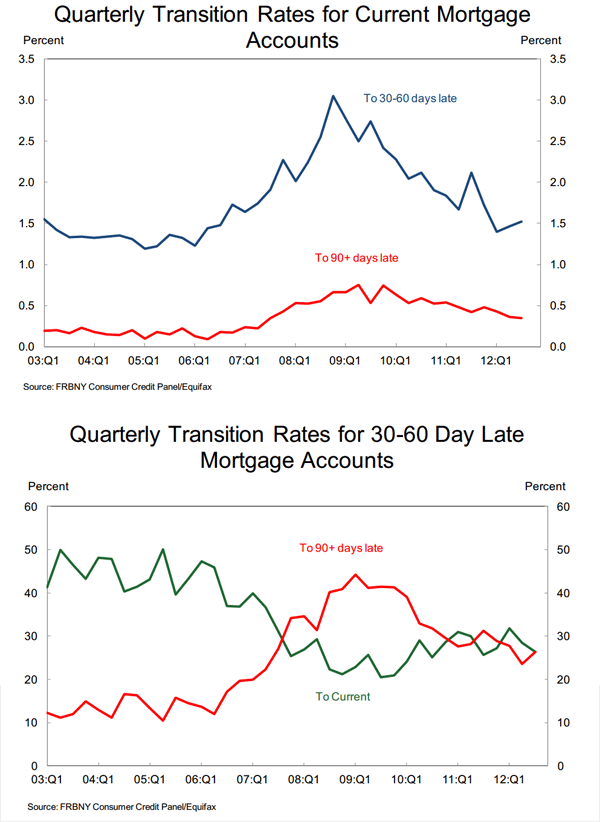
All Content Copyright © 2003 – 2009 Brown House Media, Inc. All Rights Reserved.nReproduction in any form without permission of MortgageNewsDaily.com is prohibited.
Latest Articles
By John Gittelsohn August 24, 2020, 4:00 AM PDT Some of the largest real estate investors are walking away from Read More...
Late-Stage Delinquencies are SurgingAug 21 2020, 11:59AM Like the report from Black Knight earlier today, the second quarter National Delinquency Survey from the Read More...
Published by the Federal Reserve Bank of San FranciscoIt was recently published by the Federal Reserve Bank of San Francisco, which is about as official as you can Read More...

Comments
Leave a Comment